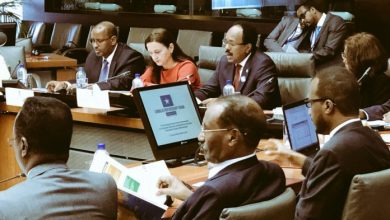Somalia to suffer remittance cuts as COVID-19 ravages the West-World Bank
Global remittances to Sub-Saharan will decline by 23% in 2020 owing to COVID-19 impact adversely affecting countries such as Somalia which heavily rely on monies from relatives and friends abroad.
Global remittances to Sub-Saharan will decline by 23% in 2020 owing to COVID-19 impact adversely affecting countries such as Somalia which heavily rely on monies from relatives and friends abroad.
The World Bank said in a study Wednesday the COVID-19 pandemic will see close to $10 billion in form of remittances to Sub-Saharan Africa wiped out by a combination of factors driven by the corona outbreak in key destinations where African immigrants reside.
“Due to the COVID-19 crisis, remittance flows to the region are expected to decline by 23.1 percent to reach $37 billion in 2020, while a recovery of 4 percent is expected in 2021,” the global lender said noting the region witnessed a paltry 0.5% decline of remittances in 2019. Remittances to Sub-Saharan Africa in 2019 stood at $48 billion.
The EU area, US, Middle East and China which host majority of African immigrants have been adversely affected by COVID-19.
The U.S alone has recorded upwards of 850,000 cases while countries in the EU such as Italy and Spain have been seriously battered by the pandemic.
Remittances from Somalis abroad account for about 23% of the country’s GDP with approximately $1.4 billion arriving in the country annually.
World Bank President David Malpass said warned the pandemic could cripple low income ecnmices and families which rely on remittances.
“The ongoing economic recession caused by COVID-19 is taking a severe toll on the ability to send money home and makes it all the more vital that we shorten the time to recovery for advanced economies,” said Malpass.
The World Bank however notes despite the decline, remittance flows are expected to become even more important as a source of external financing for low and middle-income countries (LMICs) as the fall in foreign direct investment is expected to be larger (more than 35 percent).





